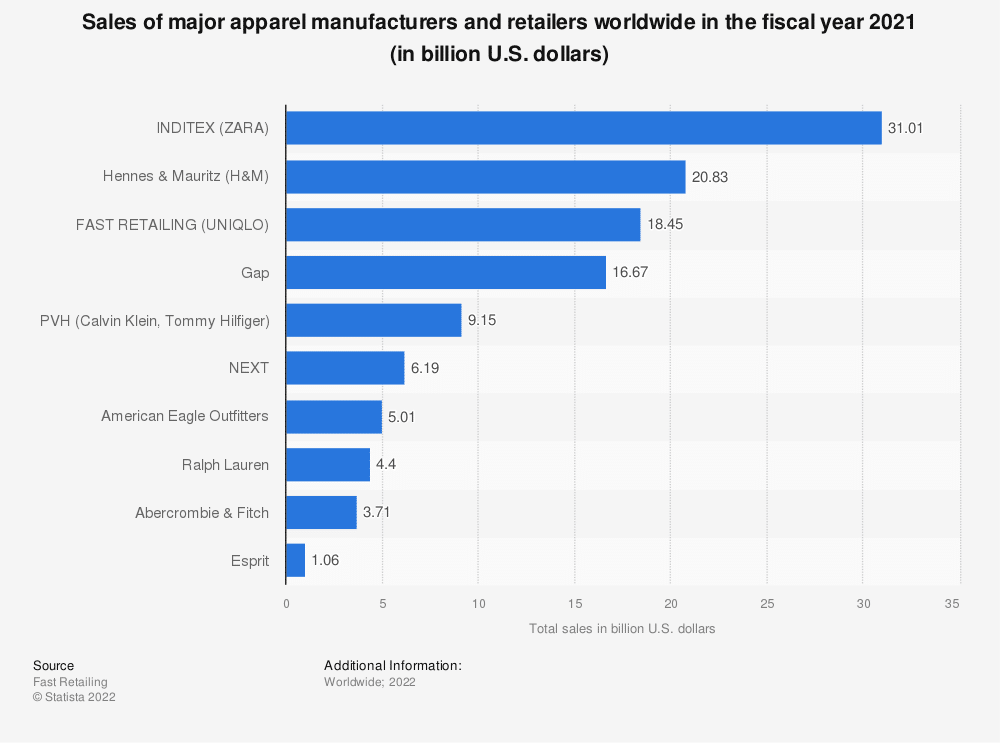The biggest fashionista retailers globally, such as Zara, H&M, Burberry, Next, Uniqlo etc receive the greatest number of hits daily about them on our website, as people search for answers to how to achieve the same.
No matter how many times you delve into someone else’s achievements it must be appreciated that there is always something different and unique to those companies that need to be compensated for from your own. Not forgetting, the huge amount of hard work that goes into anything worthwhile. It is the application and deployment of effort most fruitfully that is the key.

Ask any established retailer “What was the solution to their success”, and listen carefully, drilling into the answer for potential parallels to use. Each will acknowledge a seminal moment when something went right for them. That perfect opportunity when a return on investment (not just money, but time and effort too), that they could now rely on and effectively milk for as long as they could, to make them money.
It’s not just about their success via one thing, it is typically a collection of elements working together. Nevertheless, the success achieved in a short space of time can and often does have an immediate impact on the day-to-day trading of any company, as they reach that point. Debts get cleared, and overheads are reduced. The pressure eases, and it enables you to build up a reserve, to confidently engage with the route, newly discovered, to that success. It allows you to now confident invest, knowing that none of it is any longer being wasted.
If you search online for “the greatest challenges facing ecommerce this year“, you get a lot of elements, all pertinent to success, but ones that most ecommerce retailers have already addressed, and not the answer you want or need. So what is?
Application of advanced technology the solution to the dilemma
It is often difficult, especially for startups in ecommerce retailing with little time or money, to understand how to translate that commonly bandied maxim “the necessity of focusing on bottom line profits” and commute this into something tangible. Take employing staff for example, what if you could employ technology to do the work what would traditionally cost you the salary of someone with a couple of years of experience? (We hope to make it apparent that space-age technology has long since left human endeavours behind).
Many retailers with this conundrum turn to their site developers in the hope that they can help navigate their needs and wants. Often though, they find that the developer only wants to present flair for the creative and ingenuity, and sometimes newly learnt skills in those areas too. Putting a value on the latest moving development part can get aggravating. Instead what you need to know is what income-generating marketing element to concentrate on, and then what is the most effective means to undertake that discipline.
Typically, once your products are selected, and the supply-chain established and afforded, the next priority subsequently is getting your website produced, and for the astute retailer, this includes peripheral back-end elements, shipping, returns, accounts-appropriate plugins etc.
Then, without question, your first port of call should be to establish your email marketing. This leads you straight back into that wall of being able to afford to be able to do it, especially with that 2-year experienced person costing at least £25k pa, plus all their training and ancillary costs. Do you know how much your staff really cost?
The good news is that you no longer need to employ anyone, as autonomous email marketing solutions now exist. You might be lost in the dilemma of how to ensure the greatest return from this primary go-to marketing method (and the one still with the highest ROI in marketing) without someone selecting the products to offer and knowing what incentives to employ. The answer is predictive personalisation software, which does it all for you, very cost-effectively.
The advent of hyper-personal emails even takes this one step further, by enabling highly accurate prediction of imminent individual consumer purchases to be made, and acted upon, to secure ever greater affinity with each consumer. Most important of all is that this alien interaction with each consumer nurtures loyalty and additional sales, otherwise lost, as it precludes access by competitors to your consumers, by offering each individual exactly what they want, when they want it, before anyone else knows they’re in the market.
In a nutshell, hyper-personalisation software watches not only what each consumer buys, but the navigation patterns they adopt when making a purchase, like how long they look at each product, how often they come back to it, what purchase they are adding this selection to etc. From all this data it can calculate what products, from all your SKUs, ones that this individual is most likely to buy next. This saves all that peripheral investment of trying to reach the perfect goal of getting them to buy something (when you most need them to) converting it into the greatest return possible, soonest. i.e. so they all buy something.
There are other peripheral benefits too, apart from no staff cost. It doesn’t need you either, ever. People have the habit of making mistakes, so an autonomous software solution running independent of any human being whatsoever, ever, negates errors and omissions, plus it runs 24/7, with no strikes, holidays, sick leave, training maternity leave etc, you get the idea. It is not only working but perpetually refining and updating the data it employs.
Likewise presenting the products that have been established from that individual’s habits has other benefits. The average order value goes up, typically 15%, and their lifetime customer value increases too, as they begin to appreciate you are now always showing them what they want. And that scourge of ecommerce marketing returned goods, is now almost annihilated as your rate of return (RoR) goes through the floor. Why would they send something back if they want it? Such is the power of personalisation.





